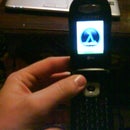Introduction: Simple Emergency Lighting System
I initially thought up this power loss switch to activate a tracking signal on electronics which didn't get created yet (but the idea is announced here so it is mine first!). Even though the system is very simple it only needs limited parts I took it a bit further by adding a nihm rechargeable battery pack that I made; that recharges when the power is on (and the relay is energized). I also added a led to indicate that the relay is energized.
I hope you enjoy and even get ideas from this instructable.
Attachments
Step 1: Do Not Fear
after looking at this schematic try not to get sad or confused, trust me I designed this circuit and I got very confused when soldering it together.
here is the parts list for the simple switch:
1 - dc power source (I used an unregulated 12v wall adaptor, I measure 17v when in use)
1 - single pole double throw 12v relay
1 - generic diode
1 - momentary normally open push switch
1 - LED
1 - 2.2k resistor
for the recharge circuit as well you need:
1 - 390 ohm resistor
these depend on your actual input voltage
1 - 10 ohm resistor
1 - 12 ohm resistor
17 - 1n914 diodes (I measured a voltage drop from 0.65v to 0.7v each)
a multimeter is a must you need to check input voltage from power supply and charge current
Step 2: Assembly
this is the easiest and the hardest step. I'll try to give detailed directions.
for the main relay power loss switch:
positive in connects to the common and the momentary switch
the negative connects to one side of the relay coil and 2.2k ohm resistor
the momentary switch connects to the other side of the relay coil, the normally open connection on the relay and the power indicator LED
diode 1 is reverse bias across the relay coil to cancel back emf when the magnetic field colapses
power indicator LED is connected to 2.2k resistor
if you are using non-rechargeable batteries:
battery positive connects to common
relay normally closed connects to output
battery negative connects to output
if you are using rechargeable batteries refer to the diagram below. this is a trial and error approach involving voltage drops and current limiting. you want the voltage when it reaches the batteries to be about 5v to 5.4v which is and medium charge on my 4.8v battery pack. and the current should be about 1/100th of the battery rating in my case it trickle charges are 3ma 1/266th.
it was at 1/125th before I added the 390 ohm resistor. even so the batteries get upto 5.45v from 5.1 in about 3 hours but at that rate it will never fully charge because of normal discharge of the batteries.
so you understand why the batteries won't fully charge with this system NiMH batteries lose 10% of their charge within 24 hours of full charge so that 90%-100% area has a high discharge rate which actually protects the batteries in this case.














